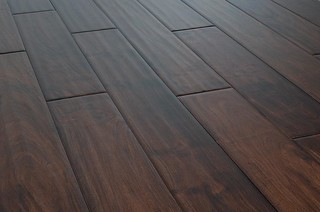By the term flooring, we usually mean the final layer above the slab. Common flooring materials are tiles, wood, laminate, marble and carpet. Before the selection of the “ideal” material, the owner should first consider carefully its needs and the needs of its family. Besides floor installation is one of the most hard-to-accomplish and time-consuming parts of a renovation project because it requires the removal of furniture and appliances. Moreover, flooring installation requires dismantling, skilled technicians, material supply and a long period before the floor is given back to use and circulation. Before, opting for the flooring materials consider the following issues:
- Where will the new floor go and what will be the use of the space. The flooring you choose must be appropriate for the room and its use. If there is moisture, then materials such as wood and carpet are not suitable. Also, in some rooms, like for example in storage rooms, you might consider installing a cheaper material than in the living room and kitchen.
- What is the style of the room. In case you are changing only the floor, then the color and texture should match the style and color of curtains, wall colors, furnishing etc. If you are planning to make a complete makeover then you have more choices.
- How the new floor will meet the rest of the floor. If you are changing only a small part of the flooring, for example the flooring of the kitchen, then you should think how the new floor will meet the old. It is also possible, to have a difference in heights. In that case you can use transitions.
The ultimate goal is to choose a material that will be both practical and beautiful and will fit into your budget. After opting for the material, it is time to design and plan the execution. The process becomes easier if you break it into stages. In any case, the careful design should be completed before proceed into the installation. Unfortunately, many issues arise during the installation, so it is crucial to try to predict and solve any problems on paper. Remember, that the paper gives you the freedom to experiment and change your mind as many times as you want. But, once the floor is down you can’t easily start over.
Floor installation planning step by step
- Make sure that the subfloor is rigid, flat and can accommodate the new flooring. Many materials, like marble, granite and tile are heavy. So before installing them you should check the strength of the slab and sometimes the strength of the structural frame, to make sure that they can support the added weight.
- Measure the dimensions of the space and calculate the square footage. Using these calculations you can order the material and calculate the cost.
- Draw a layout of the room. In the layout you must add the measurements and any obstacles, such as pipes and heating units.
- Search the market. In relation to the cost you should know that there are three main factors that affect the overall cost and you should estimate all these factors together: a) initial cost, b) installation cost, c) maintenance cost. If for example, you pick a cheap material, but in a few years the flooring needs maintenance or replacement then the choice was not beneficial. On the other hand, there are expensive materials but they need almost no maintenance.
- Order the materials. In some cases you need to wait some time until you have the materials on-site while in other cases the materials are ready for delivery. It is also recommended to order 10 to 20 percent more material, in case some pieces are damaged or break during the installation. Extra material is stored in basement or storage rooms for future use.
- Remove the old flooring. Before removing the old floor, make sure that the new materials are in good condition. It is advisable to let the new materials in space for about 72 hours to allow them to adjust in temperature and humidity levels.
- Think how you will remove the debris. You might need to order a dumpster or contact the local sanitation facility for disposal information.
- Prepare the subfloor. This is a crucial step for the successful installation of the floor.
- Install the flooring.Follow meticulously manufacturer’s instruction. Allow enough time, for adhesives and grouts to dry well.
- Arrange furniture. Make sure that the job was done properly. In case you notice any failures it is advisable to fix it before bringing back furniture, because there is always chance to become worst.
| < Prev | Next > |
|---|





